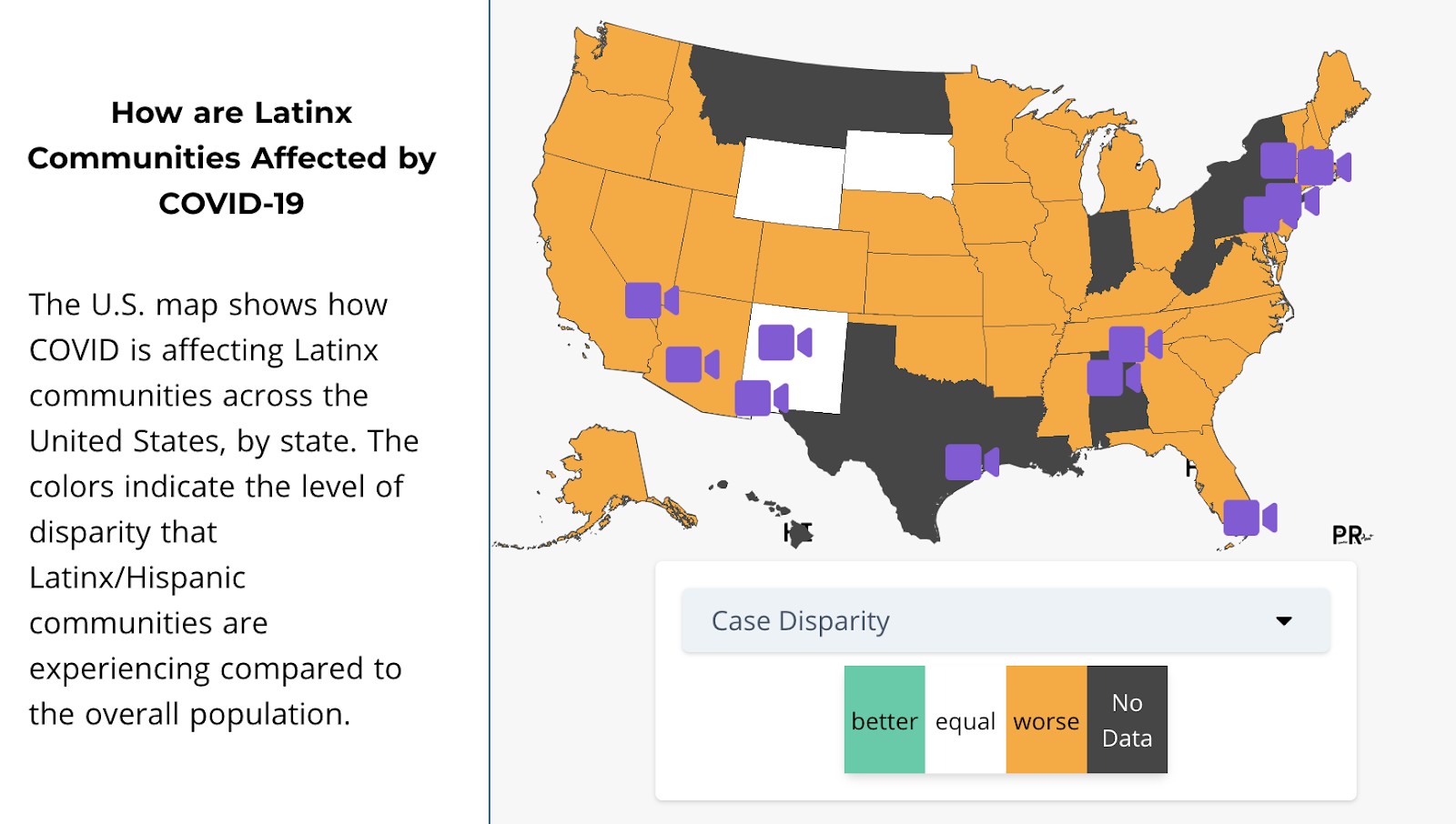A Look into Latinx Resilience in the Face of COVID-19
HIP Launches COVID-19 Data Project to Highlight Latinx Impact Across the Americas
Oakland, CA — In collaboration with RacismoMX, Hispanics in Philanthropy (HIP) launched a COVID-19 impact disparity map to highlight and measure the inequities Latinx and Indigenous families are facing, across the United States and Latin America. HIP’s partner organizations reveal stories of people implementing simple, effective solutions like providing educational technology for students and their families or partnering with farmers to provide community refrigerators with healthy food options.
“The ultimate goal is to bring resources directly to trusted grassroots organizations,” said Ana Marie Argilagos, President & CEO of Hispanics in Philanthropy. “Our partners have taken on a creative attitude to shift operations in order to support immediate needs. We want to share a glimpse of how Latinx and Indigenous families are experiencing this pandemic and how we can maximize impact when we demonstrate trust in our partners to implement solutions that are best for their community.”

In response to the pandemic, HIP has worked to flatten the “inequity curve” for Latinx families, businesses, and the nonprofits that serve them. HIP has provided over $12 million in emergency funding to assist seven target areas for Latinx and Indigenous communities, including farmworkers, other essential workers, migrant and asylum seeker-serving organizational networks, advocacy, women, civic participation, and small businesses. The response counts on a long-term strategy to develop continued relief, equitable recovery, and deepen civic engagement in the Latinx community.
As the pandemic has progressed, the Centers for Disease Control and Prevention revealed how Black and Latinx people are on average three times as likely to be infected by COVID-19 than their white neighbors and nearly twice as likely to die. Ultimately, the pandemic exposed how our social structure is failing communities of color. The data visualization aims to provide a scale of this metric to track impacted Latinos per every 100K residents across countries. Alongside the data and stories of resilience, there are highlighted areas of financial, health, and immigration impact to provide a lens to dismantle the systemic failures that propagated them.
